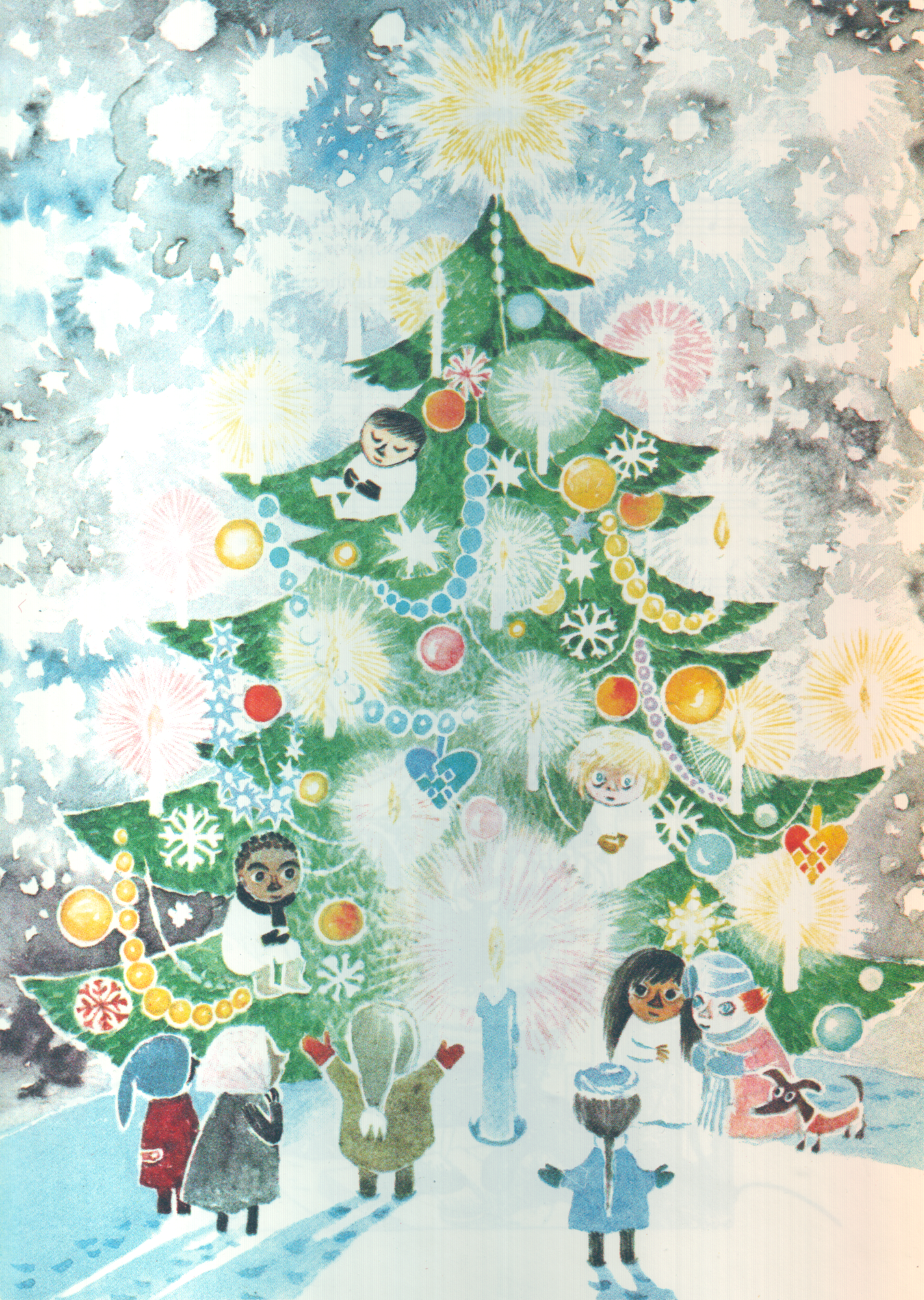Det osynliga barnet
A collection of short stories following several characters in and around Moominvalley as they discover things about life, themselves and the world around them.
This ninth book sees the series pivot heavily away from a more child targeted audience with stories that may not only be more appreciated by adults, but perhaps only really understood with significant life experience. Tove Jansson considered this being her last Moomin book after release (Honkasalo, 2017), something that ultimately wasn’t true, but still holds some weight in how the direction of the stories would be forever altered after this.
The book is dedicated to then newly-born Sophia Jansson, daughter of Tove Jansson’s youngest brother Lars Jansson. Sophia Jansson is one of the main characters in Tove Jansson’s 1972 novel the Summer Book and would later take over lead of Moomin Characters Oy Ltd from her late father (Rix, 2010).
The final short story of the book, the Fir Tree, was initially published on Sunday the 23rd of December 1956 in Swedish newspaper Svenska dagbladet. The story is more or less the same, although it features an earlier illustration of the titular fir tree which was later exchanged when the short story was later republished in this book. This means the writing of the story predates the publication of Moominland Midwinter, giving context to how the two stories may conflict with each other in tone when presented in typical book publication order.
The rest of the short stories of the book were initially ran as a serial in the Swedish weekly magazine Vi from June 23 to November 17 1962, before being collected and published in the final book at the end of the year (the adverts started in early December, so presumably around that time). Similarly, Moominpappa at Sea was also serialized in the magazine before publication. The short stories were more or less identical to their final published counterparts, running in the same order and featuring the same, although fewer, illustrations. Preceding the serialization, Tove Jansson’s essay Den lömska barnboksförfattaren (The Sly Children’s Author) was published in issue 24.
The serialization ran as following:
- No 25/26 – June 23 – The Spring Tune
- No 27/28 – July 7 – A Tale of Horror
- No 29/30 – July 21 – A Tale of Horror, cont.
- No 31/32 – August 4 – The Fillyjonk Who Believed in Disasters
- No 33 – August 18 – The Fillyjonk Who Believed in Disasters, cont.
- No 34 – August 25 – The Last Dragon in the World
- No 35 – September 1 – The Last Dragon in the World, cont.
- No 36 – September 8 – The Hemulen Who Loved Silence
- No 37 – September 15 – The Hemulen Who Loved Silence, cont.
- No 38 – September 22 – The Hemulen Who Loved Silence, cont.
- No 39 – September 29 – The Invisible Child
- No 40 – October 6 – The Invisible Child, cont.
- No 41 – October 13 – The Secret of the Hattifatteners
- No 42 – October 20 – The Secret of the Hattifatteners, cont.
- No 43 – October 27 – The Secret of the Hattifatteners, cont.
- No 44 – November 3 – Cedric
- No 45 – November 10 – The Fir Tree
- No 46 – November 17 – The Fir Tree, cont.
An extensive record of sketches and alternate takes for the illustrations of this book have been unearthed throughout several books and web sources. All listed beneath sorted by their respective short story.
The Spring Tune
A Tale of Horror
The Fillyjonk Who Believed in Disasters
The Last Dragon in the World
The Hemulen Who Loved Silence
The Invisible Child
The Secret of the Hattifatteners
Cedric
The Fir Tree
The initial cover artwork featured a scene from the Hemulen Who Loved Silence, with two additional illustrations with very similar motifs portraying characters from various short stories in the book being used for translated publications. The updated 1968 cover features Little My and Ninny playing with a kite, likely chosen to fit the original Swedish title Det osynliga barnet (The Invisible Child).
Additional material for the cover illustrations include the original artwork with run-off margins and a sketch for the revised Ninny cover.
At some point additional or alternate illustrations were made for the Fir Tree, the line work is strikingly different from the pencil work Tove Jansson was using for Tales from Moominvalley, so it’s safe to assume these were made at some other point. Two are featured in the songbook Visor från Mumindalen (Songs from Moominvalley).
Some publications include additional illustrations for the introduction, with unique little character portraits to signify every story in the book, a group assembly of various Moomin characters and a complimentary decorative wreath.
Advertisements for the book in Swedish press were initially accompanied with a meet and greet campaign with the artist. Surprisingly, the book had a fairly long presence, being advertised independently as late as four years after publication.
In 1971, a motif from the Fir Tree short story was recreated in full color as a promotional benefit postcard for children’s aid fund UNICEF, featuring characters of various ethnic backgrounds in place of the ones from the original story (Moomin Characters Oy Ltd, 2016).

Sources:
Honkasalo, M. (Ed.). (2017). Guess What Happens Next? Tampere Art Museum.
Rix, J. (3 July 2010). The Moomins – a family affair. The Guardian. https://www.theguardian.com/lifeandstyle/2010/jul/03/moomins-tove-jansson-sophia
Moomin Characters Oy Ltd. (29 September 2016). Moomin.com donated over 500 euros to UNICEF. https://www.moomin.com/en/blog/moomin-com-donated-over-500-euros-to-unicef/

| Published: | 1962 |
| English translation: | 1963 |
| Finnish translation: | 1962 |


























































































































